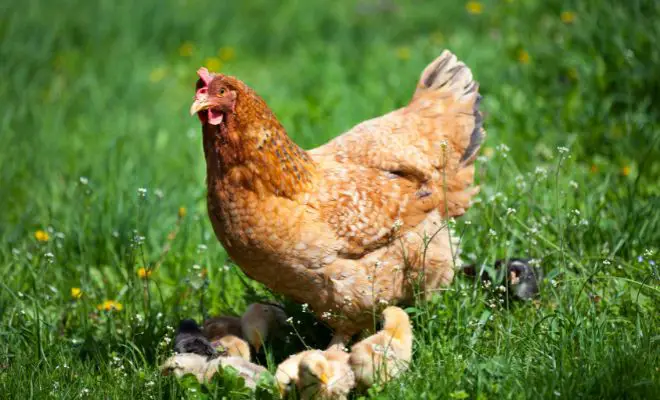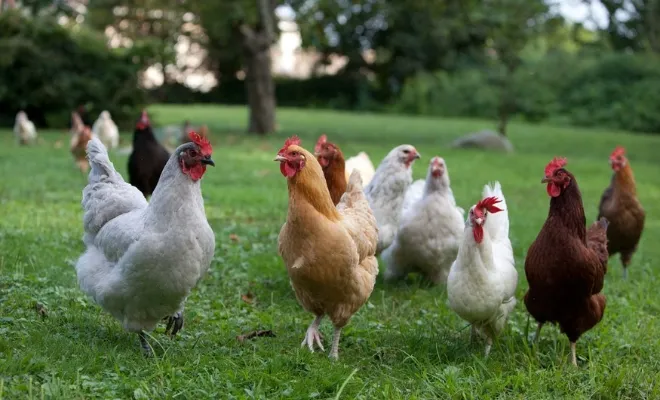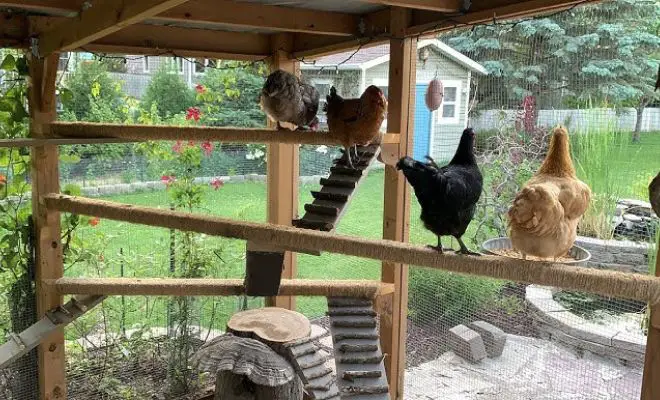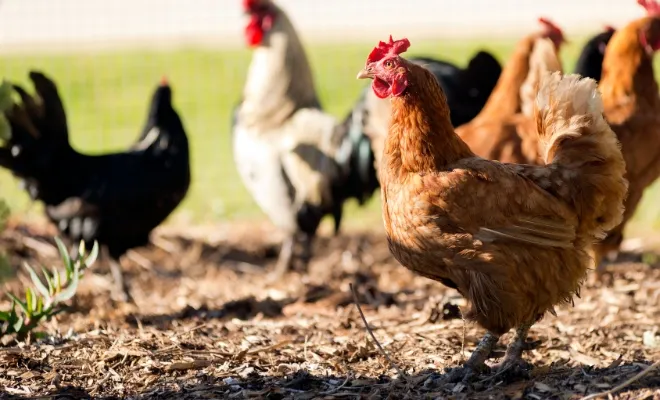Autumn Awaits – Essential Prep for Happy & Healthy Chickens!

As the leaves begin to change and the temperatures start to drop, prepare chickens for the upcoming autumn. Autumn brings cooler weather and shorter days, which means a little extra care is needed for the chickens.
Getting your chickens ready for autumn doesn’t have to be complicated. With a few simple adjustments to their diet, coop environment, and activities, they’ll get a comfortable time in autumn. You can also think like it’s almost the fall/winter and offer things they need.
Would you love to hear more about autumntime care for chickens? Let’s dive in to get a list of tasks you should follow as a chicken owner.
Table of Contents
Getting Your Chickens Ready for Autumn: What Are the Needs of Chickens in This Season?

In autumn, chickens face a few changes in their environment that impact their needs. Here are things to know –
- Free source Protein: As the days shorten and temperatures drop, insects and natural food sources dwindle. This means chickens may struggle to find enough protein and other nutrients they normally forage for.
- Calcium: Strong, healthy feathers also require calcium.
- Vitamin and Mineral: Ensure the source of vitamins and hydration.
- Molt: Many chickens undergo a molt in autumn. You may see them replacing their old feathers with new ones.
- Cool Environment: Chickens can’t regulate their body temperature as well as humans. Cooler weather means they need more energy to stay warm.
- Daylight: Less daylight disrupts chickens’ natural laying cycle. It potentially leads to a decrease in egg production.
- Feeding Timetable: Chickens should have a balanced diet at that time. So, you need to ensure the feeding frequency in autumn.
- Supplemental Diets All Day: They need supplemental diets. So, seasonal produce is a good point.
These are a little touchy about their needs. Now, let’s come to the main discussion of chicken care during winter.
How to Care for Chickens During Autumn? 8 Ways!
As autumn arrives, our feathered friends, the chickens, have specific needs to ensure their well-being. So, here I listed 7 things you must keep in mind during autumn.
1. Adjusting Feeding and Nutrition

Chickens face challenges during autumn. This is especially true in the case of food and nutrition. They get less natural food and molting.
Increase protein in their diet with mealworms, black soldier fly larvae or higher-protein feed.
Strong, healthy feathers need calcium. Provide oyster shells or a calcium supplement to support their needs during molting.
You can also offer chopped apples, pumpkins, or other seasonal fruits for a vitamin and hydration boost. A splash of apple cider vinegar in their water can also contribute to healthy feathers.
Besides, ensure a constant supply of grit to help them digest food
However, some other treats can be –
- Windfall apples and pears
- Berries (blackberries, blueberries, raspberries, and cranberries)
- Crushed rose hips
- Pumpkins
- Bruised or damaged fruit
Note: Remember, moderation is key!
2. Preparing for the Molt
During their annual molt, chickens need more protein for feather growth. Provide extra protein sources and monitor their overall health.
Some chickens become lethargic during molting. Adjust their feed amounts if needed to avoid overfeeding.
Molting typically lasts anywhere from 6 to 12 weeks. Providing some extra support during this time.
3. Coop Keeping in Cooler Weather
Before the cold sets in, give the coop a thorough cleaning to remove dirt, droppings, and pests. This promotes good air circulation and a healthier environment.
You can add a deep layer of fresh, absorbent bedding like straw or wood shavings. This provides insulation and a cozy spot for them to snuggle in during chilly nights. Ensure a weatherproof chicken coop!
Seal cracks and holes in the coop that could let in drafts. A drafty coop makes it hard for chickens to stay warm.
4. Light and Egg Production

As days get shorter, egg production may decline. I said it earlier!
Typically, hens continue laying for about 12 to 14 months. Then, they undergo a molting period and rest for two months during autumn and winter. Afterward, they resume laying for another 10 to 12 months. It’s before repeating the cycle with another molt.
So, consider using artificial lights in the coop to maintain a steady flow of eggs. Aim for 14-16 hours of light per day (optional).
Related Articles:
- Leaving for Vacation? Here’s How You Can Ensure Coop Security
- Should I Free Range My Chickens or Not
5. Protecting Against Pests and Predators
With less natural food available, predators become more active. Ensure the coop is secure with strong locks and predator-proof fencing.
Regularly check the coop for signs of mites, lice, or other pests. Use natural or commercially available remedies to manage pest populations.
6. Provide Enrichment Activities
With less daylight, chickens can get bored. So, they need boredom busters!
- Offer scratching areas with hidden treats or dust baths to keep them active.
- Hide treats in the litter for them to find.
- Create a maze in the run with hay bales.
- Hang veggies or fruits for them to peck at.
- Provide a dust bath with a fresh mix and maybe some herbs.
- Scatter pinecones in the run for them to play with.
Note: Rotate these activities every few days to keep your chickens engaged.
7. Look At Their Health Condition
People ask, do I need to deworm my chicken during Autumn? Well, yes, fall is a good time to deworm your chickens. It’s because worm infestations can weaken their immune system. Consult a vet or poultry specialist for worming recommendations specific to your flock.
You may also look for other health issues during autumn time.
8. Select Breeding Cockerel (if applicable):
If you plan to breed your chickens in the spring, autumn is the time to select a healthy breeding cockerel. Look for a rooster that is alert, active, and free from any physical defects.
See the video to get more details about autumn care for chickens.
FAQs
Get to know more? Here are some related queries below!
Q. How do you take care of chickens in the fall?
It’s the same as autumn as they’re close to each other. Adjust their diet with extra protein and calcium for molting. Also, provide coop coziness with fresh bedding and draft-proofing!
Q. Do chickens actually lay in autumn?
Egg production might decline due to shorter days. But using artificial lights (optional) can help maintain laying.
Q. Will chickens eat more in autumn?
Yes, they’ll need more energy to stay warm and grow new feathers during their molt. So, offer more protein-rich food sources.
Conclusion
As autumn gets closer, it’s important to make sure your chickens are ready for the change in weather. They need extra attention during this time. Just a few changes to their food, where they live, and what they do can help them feel good during the colder months.
Give them extra food, keep their coop warm, and make sure they’re safe from bugs and animals. If you take care of them well, they’ll do great in autumn and beyond.






